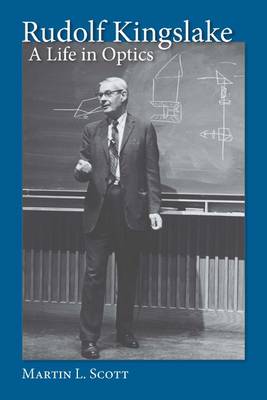
- Afhalen na 1 uur in een winkel met voorraad
- Gratis thuislevering in België vanaf € 30
- Ruim aanbod met 7 miljoen producten
- Afhalen na 1 uur in een winkel met voorraad
- Gratis thuislevering in België vanaf € 30
- Ruim aanbod met 7 miljoen producten
Zoeken
€ 25,45
+ 50 punten
Omschrijving
If a single lens can form an image, why does our camera have several elements? A curious child, Rudolf Kingslake inquired of his father the answer to this question nearly one hundred years ago, foreshadowing his remarkablecareer in optics and his future influence on a newly formed branch of science. Born in 1903, at the beginning of the era of technological progress, Kinglake graduated from the Imperial College in London and was offered a positionon the original faculty of what came to be known as the renowned University of Rochester Institute of Optics. Martin Scott details the life of the beloved professor who maintained simultaneous careers in academia and industry as the director of Optical Design for Kodak. Filled with personal reminisces and anecdotes from friends, family and colleagues, Rudolf Kingslake: A Life in Optics encompasses the breadth and vivacity of the pioneer and his astounding life. Martin L. Scott is former Director of Scientific Imaging at the Eastman Kodak Company, and built the Kingslake Archives online register for the Rush Rhees Library's Department of Rare Books and Special Collections, University of Rochester.
Specificaties
Betrokkenen
- Auteur(s):
- Uitgeverij:
Inhoud
- Aantal bladzijden:
- 154
- Taal:
- Engels
- Reeks:
- Reeksnummer:
- nr. 15
Eigenschappen
- Productcode (EAN):
- 9781580463973
- Verschijningsdatum:
- 1/12/2011
- Uitvoering:
- Paperback
- Formaat:
- Trade paperback (VS)
- Afmetingen:
- 152 mm x 229 mm
- Gewicht:
- 671 g

Alleen bij Standaard Boekhandel
+ 50 punten op je klantenkaart van Standaard Boekhandel
Beoordelingen
We publiceren alleen reviews die voldoen aan de voorwaarden voor reviews. Bekijk onze voorwaarden voor reviews.











